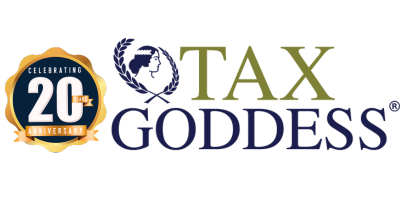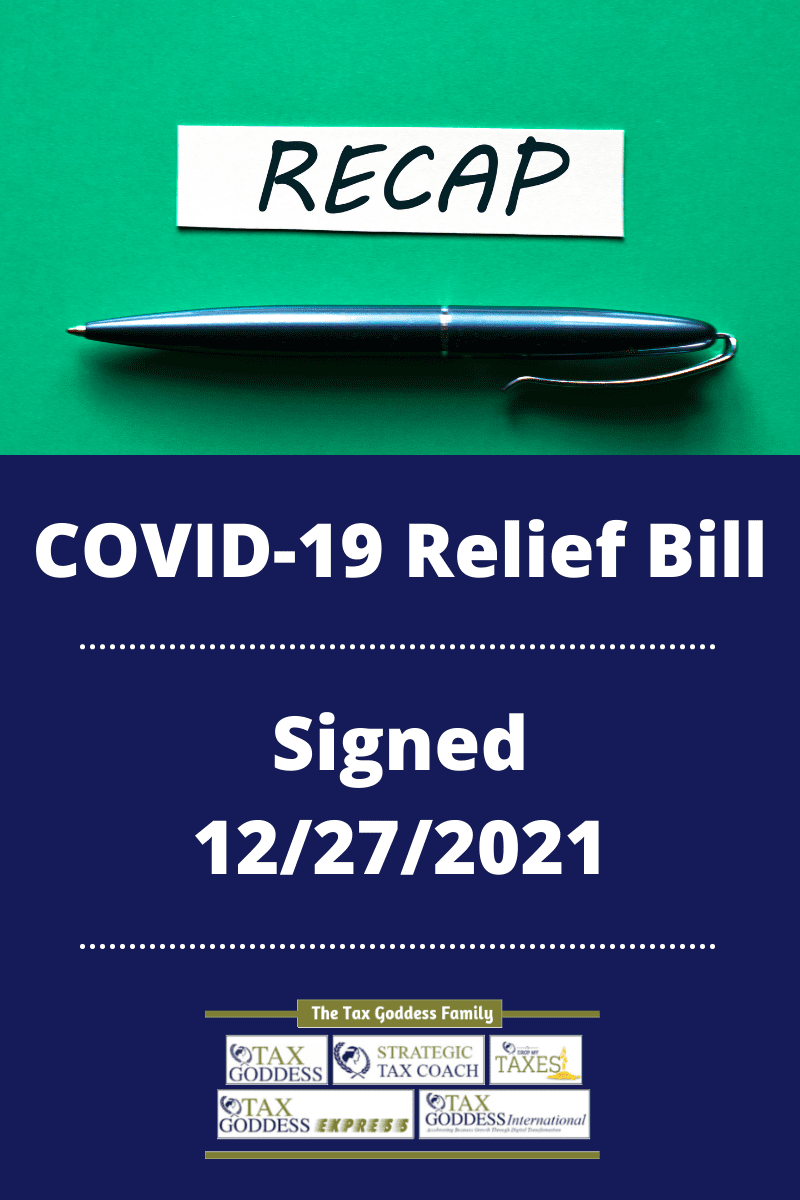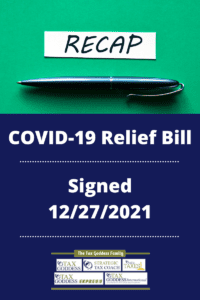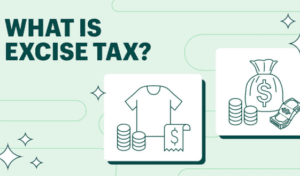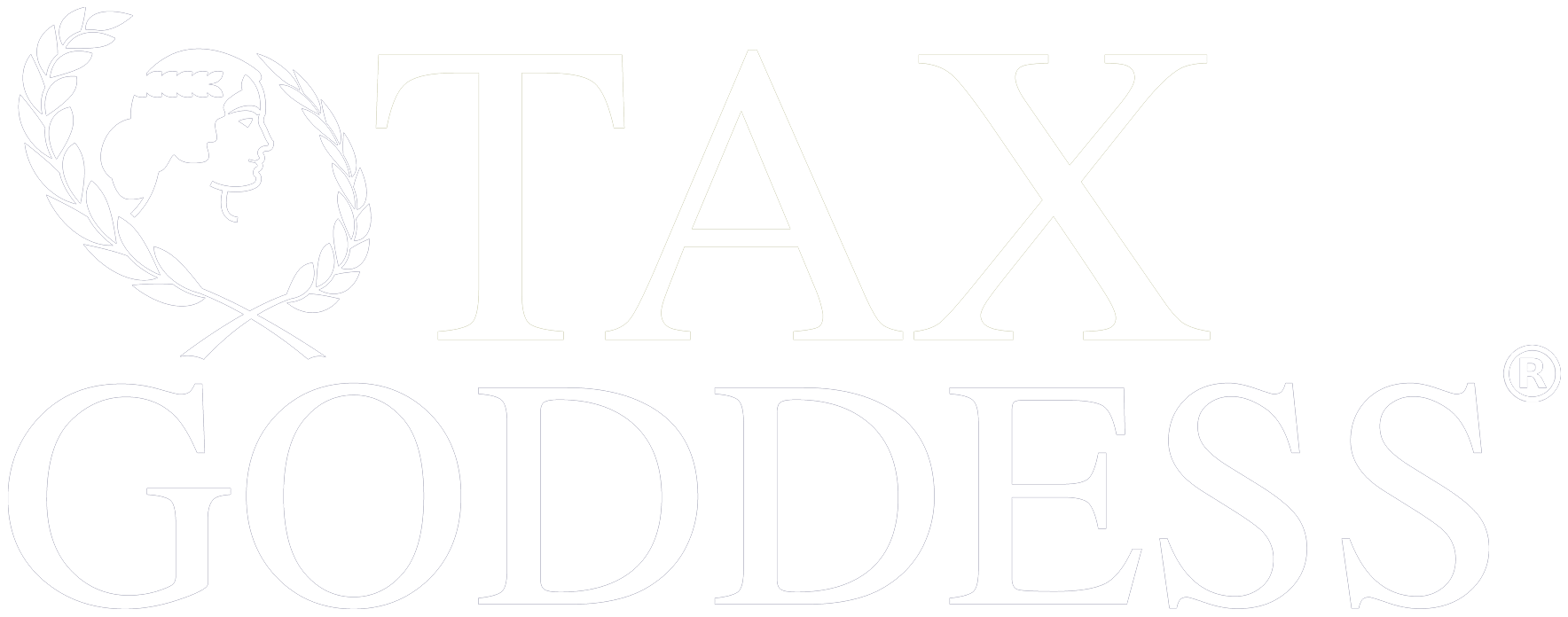Recap Article for New COVID-19 Relief Bill Signed 12/27/2021
On December 27, 2020, the President signed into effect a mammoth piece of tax legislation. This is the new COVID-19 Economic Relief Bill. This is a massive funding package. I wanted to go over some of the highly important topics that have been signed into effect, under this set of law. I will be covering many topics in this article. As you all know, these things can change and move quickly. The purpose is to answer as many questions as possible with the information given, effective December 27, 2020, and provide a recap of the most important pieces that may impact you, your businesses, income, and taxes!
Economic Impact (Stimulus) Payment
- $600 to pay directly to individuals that are making $75,000 or less per year
- $1,200 for a couple making less than $150,000 a year
- an extra $600 per dependent for children under 17
Now, there’s a lot of arguments still going on about this. This is what the President was originally saying:
- $600 is not enough
- Requested $2,000 / person per dependent all the way across
President Trump was effectively pushed into signing this bill the way it is; but, $600 is still better than zero. He has basically requested that Congress and the Senate still look at bumping this to maybe $1200, maybe to $2000. At the moment, it is signed into law at $600 per person.
- The payments are going to be based on your 2019 tax returns.
- There are some reductions if you are over $75,000.
- Basically, anything over $87,000, you’re not going to receive a payment at all.
- There’s a phase out between $75,000 – $87,000.
- Again, $600 per person, including children under the age of 17.
Tax Provisions
Of course, that is my primary world! One of the main pieces that is still an ongoing is payroll tax deferral. If you are a business and you are struggling with cash flow, you do not have to submit the payroll taxes. Originally, that was through April 30th of 2021. That has now been pushed to December 31st of 2021.
I want to caution you guys on this:
- This is taken out like a payroll tax loan from the government.
- This is one of the few areas where the government gets really cranky:
- if you withhold payroll taxes and you do not get those paid
If you do this, it is very important:
- I highly recommend that you set up a separate bank account.
- Label it, the IRS, which of course spells theirs.
- Put that payroll tax money in that account.
You do have the ability to use the money. That is why they are giving you this payroll tax deferral extension. I would be very cautious about this one because it must be paid!
- No, ifs, ands, or buts! Unless they do another extension, it must be paid by December 31st of 2020.
Paid Leave Credits
Make sure that you are speaking with your payroll companies, especially about the paid leave credits, and some of these payroll tax deferrals. They are going to be able to help you get these calculations and do them properly to make sure that you are following rules, specifically with relation to these payroll taxes.
Unemployment Benefits
Many people have been asking about the extension of the unemployment benefits. What originally happened:
- We had unemployment, regular unemployment, at the state level.
- Then, they provided a federal level of unemployment above that and ran out.
- There were only so many weeks of that type of unemployment that were allowed.
- They have effectively added another one hundred and twenty billion dollars in unemployment insurance!
What does this mean?
- That is going to extend an additional $300 per week for anyone receiving unemployment benefits.
- This extra $300 is at the federal level and will extend through March 14th of 2021.
Now, there’s a ton of detail on the unemployment side:
Have you been working part-time?
- Have you been working full-time?
- Are there interest free loans?
If you have questions about the unemployment benefits section, here is a basic overview with bullet points of the COVID-19 Economic Relief Bill, https://www.irs.gov/coronavirus-tax-relief-and-economic-impact-payments. If you are really focused on unemployment, I would suggest that you read through that unemployment section, in the expanded unemployment benefits section.
- If you’re on unemployment, you’re going to get an extra $300 per week.
Other Labor Provisions / FMLA
You’ve got coverage under the Family Medical Leave Act/CARES Act, which was the original act back in March.They expanded that and added an additional new law. Everybody loves their acronyms, the FCRA, which stands for a Family First Coronavirus Response Act. This was giving a refundable tax credit for paid sick leave, for companies that had 500 employees or less. Of course, that was going to run out as well. This has now been extended through March 31st of 2021. The bill does not extend the provisions that require public sector employees, state, and local government entities to provide emergency paid sick and family leave.
It is different for private companies versus for government companies, public versus private. This is also going to expand some credits that are available for the employers.
- Increasing the credit rates in 50-70% of qualified wages.
- If you were an employer and you were able to hold on to your employees, there are significant tax credits that you can obtain.
- One of the biggest problems in the original ruling of the original PPP loans:
- It said that if you took a PPP loan, period – plain and simple, you were not eligible in any way for the credits.
Section 206
Oops, “we kind of wrote it wrong”, says the powers that be…
The first time you cannot apply for both the PPP and the credits on the same wage dollars.
- Let’s say for example, you had a hundred thousand dollars in wages. You only got $40,000 in PPP money, right?
- PPP loans, that other $60,000 you can apply for the credits.
- That is going to be huge!
Again, you are going to want to be working with your payroll company to have them help your CPA; and, of course, your tax strategist to have them create the calculations for you to determine how much should fall under what category:
- What is PPP?
- What are credits?
- What can you get a refund for under these new laws?
When they wrote the original CARES Act, they said that if you take out a PPP loan, you pay expenses with that PPP loan. However, any of the expenses paid with that money are not deductible, which effectively makes the PPP loan taxable. That came back to bite many people because they did not understand that it was going to be taxable. Guess what guys? This fixed it, which we are very excited about. Now, businesses that received PPP loans can take tax deductions for the expenses that were covered by forgiven loans. This is huge! Your expense lines are going to be the true expenses, i.e. what you actually paid using the PPP money.
They are adding an additional $325 billion in small business funds. $284.5 billion for the first and second forgivable PPP loans. At this point, if you’re a small business (300 employees or less) and you can demonstrate a revenue reduction (a decrease in your revenue by 25% or more), you can now obtain an additional round of PPP funding. It took the banks about two months to figure out the first round. We’ll have to see how fast they can move on the second round.
How to Move Forward
- Take a look at your set of books.
- Take a look with your bookkeeper and CPA to determine if your revenues have reduced.
Now, this is a revenue reduction, which (to me) sounds like gross revenue reduction. They’re not saying profit. They are saying revenue reduction. That is your top line revenue.
- Has your top line revenue reduced by 25% or more?
- You may qualify for the new round or the round three of the PPP and others!
Other Items of Benefit
Many health and human service type provisions are being added, such as additional support and physician fees to doctors; a temporary freeze on aging out of foster youth programs; and, a lot more generic health and human service type issues here. If you are interested in categories like maternal infant, early childhood programs, that kind of thing, the CDC website can provide more information to you.
Business Provisions and Meals
Meal deductions have always been 50%. The President is pushing to have meals at a 100% tax deduction in an attempt to help raise the spending at restaurants. I thought that was pretty cool. Definitely take a look at your meals and entertainment budgets for the year!
Deadlines and Extensions
For businesses, partnerships, and S-Corps, your original filing date is March 15th; however, when you file an extension, you will have until September 15th to submit your returns. For individuals and C-Corps, your deadline is April 15th and with an extension, it is pushed to October 15th.
I would prefer that you guys have as much time as humanly possible to figure out what the tax law changes are:
- What are they going to do to your set of books?
- What is it going to do to your tax return?
- How will the changes affect your cash flow?
Just because you file an extension, that does not give you extended time to pay. It only gives you extended time to file. I absolutely recommend that you call your CPA; call your tax strategist; get an appointment as quickly as humanly possible to determine what you need to do.
Disaster Zones
These will include areas where public assistance is mandated, typically this is going to be hurricanes and/or other types of natural disasters with significant/major damage. There is an additional 40% tax credit for wages up to $6,000, per employee, in a disaster zone.
Conclusion and Key Points
The major pieces of what is coming out of this law for my business owners:
- $600 per person relief check, with an additional check for children under the age of 17
- You also have $300 a week in unemployment benefits.
- New round of PPP
- The ability to take the expenses that you paid from the PPP loan as an actual expense against your profit.
I want you guys to be looking at your profit loss right now. One of the little, very sneaky loopholes (you guys know I’m all about legal loopholes) that they put in the original CARES Act written back in March was: If you have, what’s called a net operating loss (NOL) in the year of 18, 19, and/or 2020, the losses for all three of those years, just one year, or whatever it is, those losses can be carried backwards up to five years! If your business tanked causing a massive loss and you took out PPP funds, you’re going to have even more expenses. The likelihood that you’re going to have a pretty big NOL is very high. You can carry that loss backwards up to five years. Any of those years where you were making significant income with significant tax rates, you can probably get a chunk of cash back from the government based on the 2020 NOL! There are many ways to use the NOL strategy and strategy is my passion! Be sure to reach out to our team should you have any questions!


